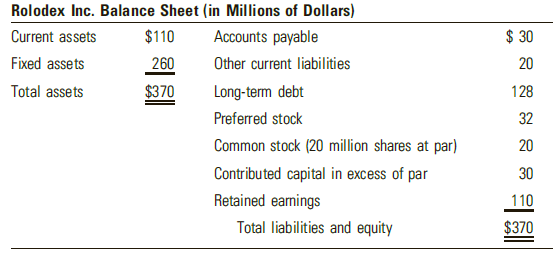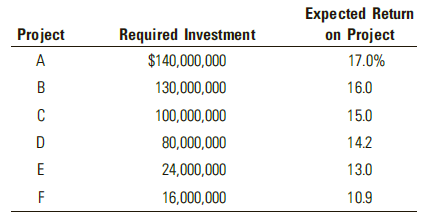Rolodex Inc. is in the process of determining its capital budget for the next fiscal year. The
Question:
Rolodex Inc. is in the process of determining its capital budget for the next fiscal year. The firm’s current capital structure, which it considers to be optimal, is contained in the following balance sheet:

Discussions between the firm’s financial officers and the firm’s investment and commercial bankers have yielded the following information: Rolodex can borrow $40 million from its bank at a pretax cost of 13 percent. Rolodex can borrow $80 million by issuing bonds at a net price of $687 per bond. The bonds would carry a 10 percent coupon rate and mature in 20 years. Additional debt can be issued at a 16 percent pretax cost. Preferred stock can be issued at a pretax cost of 16.5 percent. Rolodex expects to generate $140 million in net income and pay $2 per share in dividends. The $2-per-share dividend (D1) represents a growth of 5.5 percent over the previous year’s dividend. This growth rate is expected to continue for the foreseeable future. The firm’s stock currently is trading at $16 per share. Rolodex can raise external equity by selling common stock at a net price of $15 per share. Rolodex’s marginal tax rate is 40 percent.
a. Compute Rolodex’s marginal cost of capital schedule.
b. Given the following investment opportunity schedule, determine Rolodex’s optimal capital budget.

Step by Step Answer:

Contemporary Financial Management
ISBN: 978-1337090582
14th edition
Authors: R. Charles Moyer, James R. McGuigan, Ramesh P. Rao






